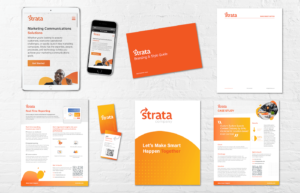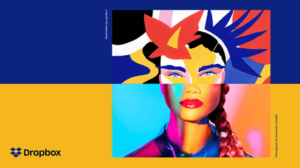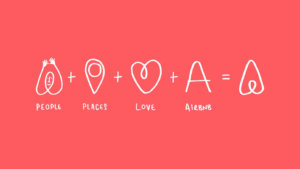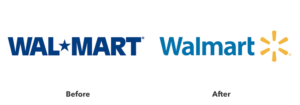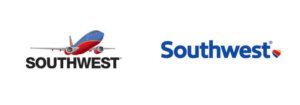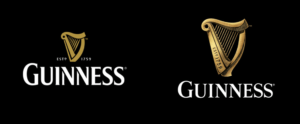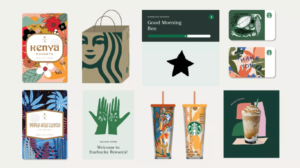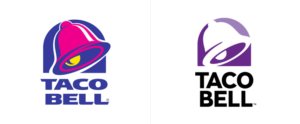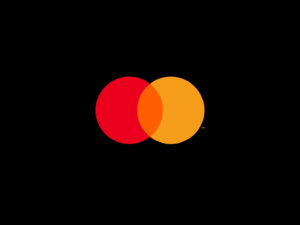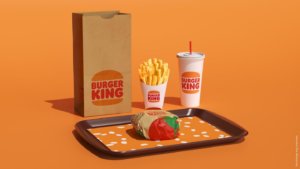& Why They Matter
As you may know, new mover marketing is a big segment for Strata and an offering we’re quite proud of. We believe we do it best – not only because of our experience and skill, but because of the multiple channels we use, the data we provide and incorporate, and the digital touches we implement. We’ve had trust in, and have been executing, great new mover campaigns for several years now. It’s no wonder we have an eye on new mover trends that may arise and behaviors within this segment – but we’re not sure anyone predicted or was prepared for the shift in the new mover market that happened at and after the onset of the pandemic. Today, we’re looking at how the new mover market has changed since March of 2020, and the increased need for new mover marketing solutions that it’s caused.
Stats You Need to Know
To get started, we wanted to give you a few recent new mover statistics to take in and think on:
- A fifth of US adults moved or knew someone that did due to the pandemic.
- Over 110,000 people moved away from New York City between February and July of 2020.
- 487% more people moved out of NY in 2020 than in 2019.
- Although there was no “exodus” away from urban areas that some were claiming, people did and do seem to generally be “drifting towards the suburbs”.
- Families have mostly chosen to move to the suburbs, while those living alone have more often chosen to move to metropolitan areas (In the first half of 2021, 7 in every 10 people who moved into urban areas were those living on their own).
- 35% of moves related to Covid-19 happened because of financial hardships.
- 36% of movers in a recent study claimed their reasoning for moving to a new place was because they felt safer there.
- 10% of them indicated that they moved to places with less stringent Covid-19 restrictions.
Overall, the pandemic has shown to accelerate some moving trends that have already been underway – and also create a few new ones. This, of course, has also had an impact on the effectiveness of new mover marketing (marketing specifically targeting new residents in your area).
What’s Causing all the Movement?
There are several reasons people are moving, some of them which we stated in the statistics above – and others that we’ll get into now. First and foremost, a big reason many have moved and are moving is financial stress. Many are moving to less expensive housing and apartment living to cut costs during these financially tough times. Additionally, apartment amenities or “big city” expenses that were previously valuable became almost meaningless during the peak of Covid-19, causing apartment-dwellers to rethink their living expenses.
Due to increases in work-from-home life and more flexible working hours and situations, people are craving more space. Because of this change, many are moving to larger spaces where they can work more comfortably. Additionally, they’re moving to where they truly want to be instead of where they previously “had” to be for their in-office employment.
For some people in different areas around the country and different industries within the workforce, finding employment during the pandemic has been tough, so this has caused some to find employment elsewhere and relocate.
And lastly, throughout the pandemic, the realization or reminder of the importance and need for family support during times of crisis and distress has been prominent – so many have moved and are still moving to be closer to the ones they love.
Overall – no matter where, when, or why they’re moving, people are definitely on the move since the onset of Covid-19.
How These Numbers (And the Causes Behind Them) Make Marketing to New Movers Essential
As you can probably imagine, as people move out of your area, you lose those customers, but as people move in, the opportunity arises for new customers to replace the old. So, more movers mean more new opportunity – but not if a competitor snatches them up by getting to them first and making a good impression.
That’s why it’s so important to be the first to put your brand in front of this niche audience, and to deliver quality marketing that welcomes, attracts, and entices them. New mover marketing programs are made to keep you connected with these new residents on a consistent basis, so that you’re never missing out on a new customer that, if targeted correctly, could become a loyal, repeat one.
Strata’s program, SmartMove, is a robust, multichannel, multi-touch, new mover marketing program that helps you find the right time and place to reach your target audience, right as they move into your surrounding area. We’ll help you reach this audience throughout their customer journey to build brand loyalty and trust and turn them into long-term, devoted customers. Interested in hearing more of our thoughts on the new mover market, or ready to start your first (or next) new mover campaign? Give us a call.
Laying Out the Pros and Cons
We know it can be a long process to research, find, and decide on a marketing solutions company that achieves your objectives. We also know that the full package – good data, quality design, excellent messaging, great customer service, mailing and fulfillment, and quantifiable results – is the goal, but not always the outcome. Since we get asked about it from time to time, in this blog, we’re going to cover why you may want to choose to work with a marketing company over a CRM services company who also happens to strategize and launch campaigns. Before you make your decision, give this a quick read.
Not Always the “Path of Least Resistance”
First and foremost, although it may appear “easier” to partner with a CRM service to launch your campaigns (because they have access to CRM) – they don’t always have immediate access to other capabilities. For example, they likely don’t have in-house creative design, printing, fulfillment, and mailing, and if they do have some of them – they likely don’t have all of them to execute a turnkey campaign. The main focus of a CRM company is usually just that – customer relationship management. Their key offering is their ability to compile and supply lists – which they may be excellent at doing, but what will they provide in terms of other areas of expertise?
Because of the outsourced services they use (such as those listed above), CRM companies can’t always make campaign changes on the fly. They’re usually unable to print on-demand, have their artist make quick modifications, make last-minute changes to the mailing process, or most importantly, optimize the campaign based on results, midstream.
The Marketing Differentiators
So, what’s the alternative? Partnering with a marketing solutions company that offers expertise in everything from implementation to optimization. Marketing companies are often also connected directly to the list compiler, and even more than that, they’re usually more closely if not directly connected to everything else you’ll need and use during the campaign production process – from strategy to printing. Since many if not all of their services are in-house (including design, print production, fulfillment, and mailing), you can always make changes and improvements mid-stream and at rapid speed. They can simply call on their marketing team of strategists, artists, print production associates, and others to change gears, swiftly improving the efficiency of the program while it’s in progress and effectively increasing campaign ROI.
Additionally, marketing companies focus solely on marketing strategy and production, and the more years of experience under their belts of doing so – the better. Marketing execution is not an add-on to marketing companies. It’s what they do, day in and day out. And the right marketing company will be able to simultaneously execute concurrent campaigns, whether single-touch or many, with corresponding digital to (targeted, specified) customers and prospects. If you’re lucky or do your research, you’ll find a marketing company that also incorporates backend fulfillment, seamless management, granular personalization, and attribution, and will be a team of dedicated experts, creators, innovators, and most importantly, marketers. You get the picture we’re painting. It’s important for a marketer or marketing team to also value and provide quality execution and customer care to every client, and ensure you have the reporting, understanding, and peace of mind you need, with 1:1 attribution, automated data exchange, and a detailed dashboard.
Next time you’re debating, think through this blog first. Do you just need a simple marketing campaign with CRM first, or do you need a multi-touch, well-focused marketing campaign with accurate, up-to-date lists and quality attribution?
How to Fight it & Flourish
As spooky season approaches and Halloween is around the corner, we’re thinking a lot about our biggest fears. But today we’re not talking about ghosts or goblins or even Michael Myers. We’re talking about one of the scariest things of all to any workplace…complacency.
“Complacency is man’s biggest weakness. It creeps up on us when we least expect it.” – Jay Mullings
Even if you think your company isn’t anywhere near complacency, there’s still always room to evaluate and grow. And, you may be surprised by what’s lurking behind the door of contentment. Complacency is not only bad for your company, but good for your competition, which we’d assume will give you a bit of a fright. If employees aren’t challenged to improve, things are the way they are because it’s the “way they’ve always been”, and the company isn’t growing, it’s definitely affecting your revenue. But don’t worry – it’s never too late to change. In this blog, we’ll take a look at the best ways to avoid company complacency and ensure you’re periodically updating and enhancing your culture, practices, and marketing.
Complacency’s Cause
Complacency can sneak up on any company without warning, shielding it from growth and stifling creativity and innovation. Why? Because if companies are seemingly doing “fine” and meeting their goals on paper, they feel no “need” or urgency to change. That’s where the biggest mistake is made, because companies should always be looking to evolve and thinking about their vision for the future. If not, ideas become stale, talent becomes bored, and eventually, the company comes to a jarring halt without any clue of how they got there.
When everything seems to be going well, it can be difficult to disrupt successes. And it may feel like the right decision to let processes and practices take their course rather than think about next steps and development, but often “the riskiest thing we can do is just maintain the status quo.” Without urgency and consistency for change, employee performance shifts and can even decline. Statistics show that only 30% of employees in America are actually engaged in their work, and only 13% of employees worldwide are engaged in their office environment. With such low numbers already, it’s so important to keep employees excited, energized, and motivated for what they’re doing and what’s to come.
Combatting Complacency
With complacency being a bigger, scarier possibility than you may have assumed, it’s important to keep it top of mind and to make sure you’re doing your best to combat it. Start with communication of your company’s mission, vision, and values. Make sure they’re clear, known, and maybe most importantly – accurate and true. Know who you are. If you do – your employees will too, and in turn they’ll feel more connected with and motivated by your workplace. Allow employees to see their contributions to the bigger mission, and their worth as an asset to the overarching vision.
After all, having a good (and growing) company culture is key to combatting complacency and ensuring workplace satisfaction. How do you improve your culture? Many ways, but the most effective tools are company newsletters, employee highlights, group meetings, and employee appreciation. Again – make your employees feel valued, and they’ll more likely provide value.
Additionally, make sure team members feel important and part of the greater whole. Encourage managers and team members to communicate within their individual teams, and make sure responsibilities are delegated and well distributed. Employees are more likely to become bored when they’re doing the same tasks over and over, so give them room to be creative and explore new opportunities. You never know who may have the next best idea.
Lastly, be prepared for whatever may come your company’s way, and never be too afraid to challenge the status quo. If we’ve learned anything these past two years, it’s that anything can happen, and that the saying “it won’t happen to us” is just not realistic. It’s important to listen to the ideas of your employees and always be prepared for what’s to come with an open communication structure. Make sure you have multiple decision makers, not just one, and that employees feel comfortable enough to make some decisions without “permission” from a leader. Training your employees to make decisions on their own will be a key factor in combatting complacency.
Refreshing Without Fear
Almost as important as your workplace and its people is your brand and marketing. Without change and evolution, your marketing can quickly become out-of-date right under your nose (causing your employees to lack company pride and your audience to lose interest). But how do you know when it’s the right time to update your brand and marketing?
A sure sign (these days) of lack luster marketing is an absence of social platforms. Some would even say if you’re not online, you might as well not exist. And although we think that sounds a little spooky, we’ll admit that it holds some truth. If you’re hard to find and not posting relevant content and imagery, target customers may be choosing your competitors (who are more accessible and approachable) over you.
Also important to your brand and its relevance is your website. In this day and age, it’s very easy to tell when a website has been left alone so long that it’s developing cob-webs. If you’re finding that your website traffic is down and your customers aren’t interacting with it, it’s time for an upgrade. But, before any big changes, compile data and make purposeful decisions. What is your audience looking for? What do they respond well too? How can you quickly and easily get them to have interest in your company and purchase goods?
Additionally, make sure you keep your advertising and customer communication – whether digital or physical – energized and creative. Combine direct and digital marketing to reach specific audiences and keep your brand top of mind. Don’t settle for just one medium that “seems to be working” if multiple channels of communication could bring you more success.
Lastly, avoid complacency by focusing on helping the customer rather than selling to them. While the overall goal of most companies is to generate sales, it’s essential you show your customers that you care about their pain points and needs. To see all of these tactics in action, check out our recent blog on how to create successful marketing campaigns.
Company complacency can sneak up on you like a ghost in the night and lead to missed opportunities, poor customer service, and disengaged employees. Stay aware of the possibility of contentment and make sure you’re always exploring, evolving, and rising above the rest. Change is inevitable, but complacency doesn’t have to be.
For more information on what we do at Strata and how we can help you fight complacency with one of our marketing solutions, contact us today.
A Strata YouTube Channel Original
Choosing the right multichannel campaign mediums can be difficult if you don’t have a good starting foundation and the right tools. That’s why, in our most recent YouTube video, we walk you through the key things to keep in mind when making this decision, and how to pick channels that best fit your company’s marketing needs.
Evaluate Your Brand & Customers, First
Before you even look at where your audience is and what they want, look at your own brand, brand voice, offerings, and then your target audience. Once you have these nailed down, then you can think about your customers – because if you understand your customers, you can understand where it’s best to communicate with them. Get to know your customers on a deeper level through data and tracking so you can develop personas and demographics, and fully recognize their pain points, wants, and needs. Test and measure tactics, update and reaudit your customer experience, ask for customer feedback – whatever you need to do to truly know your audience and therefore get the most out of your multichannel campaign. After all, 86% of customers are willing to pay up to 25% more for products and services just to have a better customer experience. Once you know your audience, then, and only then, can you figure out exactly where to meet them on their multichannel journey.
If you want to know what comes next in choosing the right mediums of communication for your multichannel marketing campaign, click on the video below and hear more from our Marketing and Social Media Coordinator Bridget. Or, if you’d like to discuss this concept with one of our multichannel experts, contact us today to get your next (or maybe even your first) multichannel campaign started.
A Look at Some of Our Favorite Customer-Focused Campaigns
Although we could write several blogs about all the great marketing campaigns that inspire and motivate us to be the best marketers possible and make the most effective material – in this blog, we’re looking at a few that we really admire because of how relatable and real they are. We’ll be breaking them down, thinking through what made them so successful, and in turn – helping you brainstorm your next campaign. Follow along as we dive into these customer-centric campaign leaders.
Apple’s #ShotoniPhone Campaign

No matter where you’re located – you’ve likely seen this one around town. On billboards, buses, signs, or online. iPhone and Apple’s popularity is pretty known, but what we didn’t know when the iPhone first became popular was that it would eventually completely replace the digital camera. And that’s what this campaign shows; that you can take photos with your iPhone that are as beautiful as a camera that would cost you thousands. That’s great and all, but that alone would not convince people of today. So, why’s this campaign so successful? It gets real people involved. It’s relatable. The photos are not only from real Apple customers – but include their names. If someone wanted to, they could look up the name of the person in the bottom corner associated with taking the photo and learn more about who that person is. The best part? Not all of these people are photographers, showing that anyone could use the iPhone to take great photos. This tactic is pretty genius and builds trust – as no one would really care if it was simply a generic photo that easily could have been taken on a Canon. “According to various studies, over half (51%) of Americans trust user-generated content more than other information on a company website and claim that it influences what they buy and where they buy it from.”
Coors Light’s #CouldUseABeer Campaign
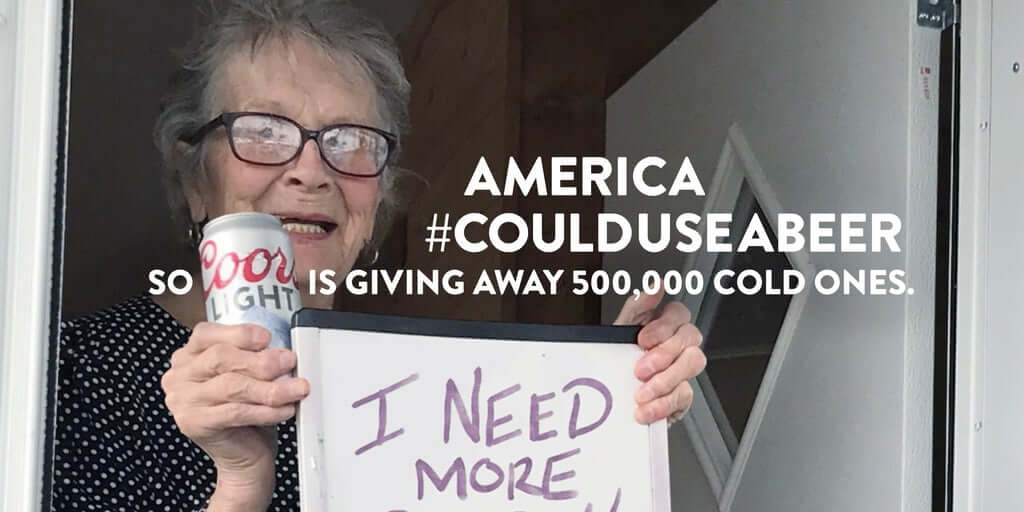
Another campaign that spoke to the general public and got them involved during a difficult time? Coors Light’s #CouldUseABeer. After a photo of a quarantined, 93-year-old woman asking for a beer went viral, Coors Light engaged with its audience by offering free six packs to anyone who was tweeted about (who – you guessed it, could use a beer). This tactic of giving away free items may seem pretty crazy, but it can go a long way. Although Coors Light gave away over 500,000 beers, their name was tweeted about again and again, which led them to trend, and boosted their reputation in a time of need.
American Apparel’s Direct Email Marketing
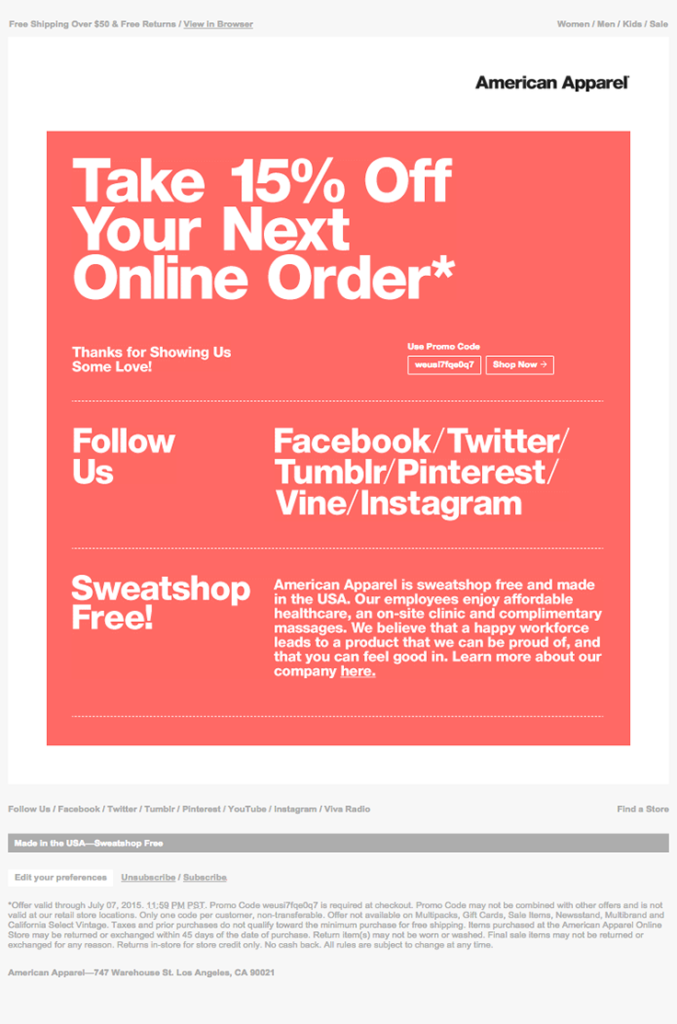
Known for being trendy and modern, American Apparel is no stranger to effective, up-to-date, customer-centric marketing. We’re specifically impressed with their to-the-point email marketing. No frills, no fluff – just what the customer wants (sales, discounts, and freebies). American Apparel always ensures that there’s no guesswork for their customers. Simple and sleek, their emails are call-to-action forward without being in-your-face.
Mercedes’ “Like You” Campaign

How do you relate a high-end brand to a broader audience of customers? Relate it to them, literally. Mercedes’ “Like You” campaign did just that. Called to several different types of audiences with phrases like, “Detail-obsessed, like you”, “Groundbreaking, like you”, “Original, like you” and “Curious, like you”. And not only was this phrasing compelling, but consistent. For the span of the campaign, potential customers could find the phrasing on billboards, signs, online ads, and on tv. The consistency was key, in that potential customers began to associate themselves with the brand and possibly even buy a Mercedes.
Airbnb’s Use of User Generated Content
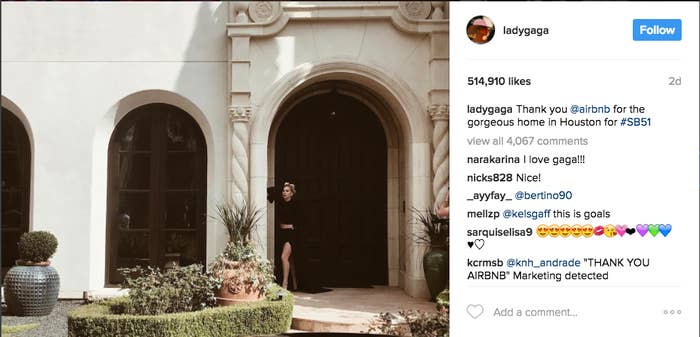
Similar to Apple’s tactic, Airbnb uses the photos, videos, and feedback of its customers in its campaigns to promote beautifully classic or uniquely interesting places to stay. “Millennials spend 30% of their media time (5 hours/day) engaged with user-generated content (UGC). Coincidently, this is the same generation that drives Airbnb’s success in the sharing economy.” Airbnb keeps things personal and personalized by including its audience, which facilitates a happy and loyal community of customers.
Coca Cola’s Share a Coke Multichannel Campaign
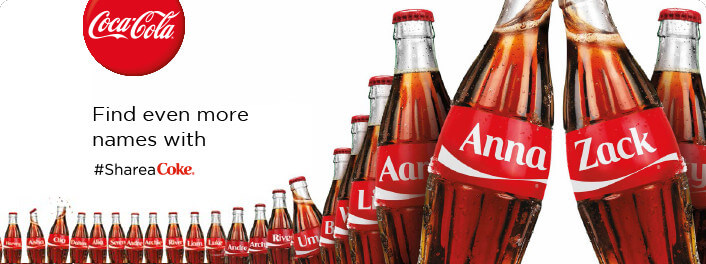
We all know this one. There’s nothing more personal than having your own name on a Coke bottle – which is exactly what Coca Cola did for its ongoing “Share a Coke” campaign. Whether you customize your bottle or simply find your name in store, you’re likely to share it with the world through text, email, on social, you name it (no pun intended)! And its rollout in 2011 sure worked in building brand awareness, boosting sales, and creating positive brand recognition, as “Young adult consumption increased significantly during the campaign, up by 7%, making 2011 the most successful summer ever. The campaign earned a total of 18,300,000-plus media impressions.”
Spotify’s #2020Wrapped Campaign
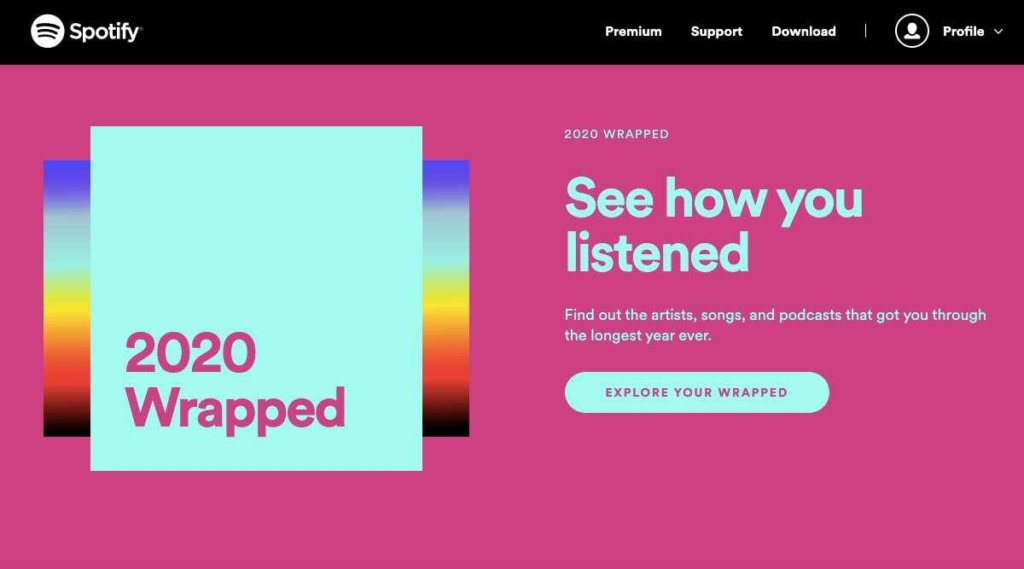
If you have any form of social media, you’ll likely remember this campaign flooding your feed, and maybe you even took part in it. At the end of 2020, Spotify allowed its customers to see their year of music with “2020 Wrapped”, which compiled their listening into a lovely array of photos and stats. Viewers loved seeing their personal data compiled into a nicely packaged marketing piece – and loved sharing their interests with others. Smart on Spotify’s end, because it not only gave them free marketing, but boosted their recognition.
So, What Have We Learned?
If you haven’t noticed, most of these campaigns share one key factor; relatability. How can you use relatability to create effective campaigns, too? Know your audience. Before even starting to brainstorm a campaign, make sure you’re fully aware of who, where, and when you’re targeting. And when you do start your campaign based off your findings, use that data and understanding to carefully craft consistent messaging that includes clear call-to-actions and personalized, catered content. Use hashtags, giveaways, QR codes, PURLs, BRCs, and more to engage with your audience and include them in your campaign. And, when and if appropriate, sprinkle in some humor.
Interested in making an impactful, relatable campaign that can help boost your company’s marketing efforts? Not sure exactly where to start? Look no further. Strata’s here to help. Contact us today to get the brainstorming started.
With the Top 10 (Other) Best Rebrands & Refreshes
We can’t believe we’re already celebrating the one-year anniversary of Strata’s brand refresh. It’s been quite a year (to say the least). But we can honestly say that, with all of the struggles of 2020-2021, our brand refresh wasn’t one of them. If it did anything (and it did a lot), it definitely brought us together, made us more confident, and better showcased our personality, vision, team, and solutions. The brand refresh catapulted Strata into 2020, helping us solidify our style and services, attract new talent, and stay inspired.
When we decided we needed a new look – we had to pick between a full rebrand or a refresh. For us, the answer was easy. A complete rebrand would have required scrapping our identity and starting from scratch, where a refresh allowed us to keep our main identity and strategy intact. Our brand was strong with our current clients and we had a great reputation as problem solvers and solutions experts – so a refresh was perfect for what we needed to do.
With any rebrand or brand refresh – “consistency across all channels is key”. Over the past year, we’ve ensured that all our materials – from website to print, are on-brand.
Since we now have a bit of rebrand and refresh experience under our belts, we wanted to take a look at the top 10 best company rebrands and refreshes (in our eyes) besides Strata’s, of course.
Our Top 10
Dropbox
Dropbox refreshed its brand in 2017, and it was nothing short of successful. The company worked with design studio “Collins” to create a cleaner and simpler logo and lots of illustrative elements to better connect with their primarily creative and collaborative audience.
Airbnb
Airbnb did a full rebrand in 2014 with Design Studio, sending their team of designers to 13 cities to truly immerse themselves in Airbnb’s offerings, community, and mission. It resulted in a beautiful brand that differentiated Airbnb from its similar competitors. The CEO of Airbnb even stated, “When I look at this brand, I suddenly realized everything I’ve been trying to say, now we have a way to express it.”
Walmart
“There are very few companies in the world that managed to change the public perception of their brand as successfully as Walmart did.” In 2008, Walmart made this change to get away from their “always low prices” slogan that often-made customers feel like it was also “always low quality”. They also wanted to steer clear of the questionable corporate practices they were called out for in the early 2000s. So, Walmart did a complete 360 with a whole new brand from redesigned stores to a new look and personality.
Southwest
We love this brand refresh because it reminds us of ours. Without a complete overhaul, Southwest changed its look and logo to showcase their humanity and heart – literally.
Guinness
Good old Guinness. Many love it, others don’t, but it always holds true that Guinness makes us feel like we’re back in the olden days, sipping a brew in the pub. Instead of following the crowd of flat logo designs, Guinness actually added detail to its logo in 2016, working “with real harp makers to breathe new life into the legendary logo” that “could be built into an actual harp that would work properly and be in tune.”
Starbucks
Starbucks is loved by many – and dare we say it – is mainly successful because of its brand (although we do love it a latte). They’ve made slight changes over time to the brand, always increasing their user experience and recognizability with a “distinctive color scheme, typography, and illustrations.”
Taco Bell
You may not have really noticed Taco Bell’s brand refresh until now – but its cleaner, simpler look has helped it stay relevant among its many fast food and taco chain competitors. Along with this well-done refresh, Taco Bell has been named “one of the healthiest fast-food chains in America,” so, they’re doing quite well.
Mastercard
In 2016, Mastercard conducted a refresh with Pentagram to emphasize “simplicity, connectivity and seamlessness.” It’s simple and sleek look of just the famous two overlapping circles is surprising, but logic-based. “The change follows research by Mastercard that found that more than three quarters of people asked were able to identify the brand from the two interlocking circles alone.
Burger King
For the first time in 20 years, Burger King conducted a brand refresh with a new logo, uniforms, and packaging – and we love its nostalgic look. The new logo is actually very close to BK’s logo design from the 70s-90s. The creative agency on the project wanted to “pay homage to the brand’s heritage with a refined design that’s confident, simple and fun.”
Intel
Last but not least, Intel’s 2020 refresh caught our eye because of its subtle hints to past logos. Again, it refers back to their past while being currently relevant. “This new logo includes elements of both (past logos), but in a much more subtle, minimalist way.”
To take a more in-depth look back at our brand refresh, visit our original refresh blog, here. If you’re looking to make your branding and marketing communications more effective and efficient, give Strata a call.
Get to Know These Tracking Treats
Within the world of marketing, there’s a lot of buzz around the topic of cookies and what the future holds for tracking website visitors and generating personalized advertisements. While the topic’s relevant, not many people are completely informed on what cookies are and the impact they have on our ability to create better customer experiences. In this blog, we’re going over what cookies are, the differences between first-party and third-party cookies, and the future of online tracking.
So, What Are “Cookies”?
Although many of us are “foodies” here at Strata, and could talk about a good dessert all day, this blog isn’t about Oreo or Chips Ahoy. We’re talking about web “cookies” – text files put into a user’s browser page while they’re visiting a website. Cookies are known by several names – web cookie, internet cookie, browser cookie, or HTTP cookie, but they’re all the same, and in general, they track and log browsing activity against identification data such as IP addresses. Why is this information useful? Primarily, cookies help save information about a user in order to personalize their website experience and the advertisements they’re shown.
While cookies have enjoyed a childhood free of regulation, their “free-willy” time is coming to an end with recent regulatory initiatives driven by an increase in public concern over internet privacy. The first major change came when General Data Protection Regulation (GDPR) made consent mandatory in order to track visitors on a website. To give you a feel for the impact of GDPR – about 11% of users click to “accept all cookies”, 76% of users ignore the banner completely, 12% close the cookie banner, and 0.5% of users actually open up cookie settings, read through terms and agreements, and sometimes make adjustments. These numbers are misleading, however – what GDPR essentially did was force the user to choose between viewing the desired content and accepting cookies OR (with exceptions) leaving the site entirely. So, while it looked good – almost all of the visitors in the stats above were still being tracked.
At this point, you might be thinking that we need to eradicate the cookie – if so, hold that thought. Cookies almost always make your experience on the web better – they’re your friend, not your enemy. To solve privacy concerns – which is the intent of all privacy-centric regulation – we’ll need to jump down a level. There are two major types of cookies – First-Party and Third-Party. Both contain the same pieces of data and technically can conduct the same actions, but they’re created differently, used differently, and have different benefits for distinctive situations. Let’s get into each one.
First-Party Cookies
Simply put, first party cookie technology is usually installed or authorized by a website’s owner and only tracks that user across that specific website. First-party cookies are set on the publisher’s server or on the JavaScript loaded to the website. Their defining technical feature is that, for the most part, only the domain that created the cookie can access it, thus they are seen as less invasive and are more welcomed by users.
These cookies allow website owners to collect analytical data, remember individual user settings or content (remembering what’s in a user’s shopping cart, their language preferences, or their username and password), and perform useful functions to provide better user experience. That last part is important – first-party cookies primary purpose is to deliver more relevant, user-friendly experiences to individuals. If you’d like to see the difference they make, just clear your browser cache and visit some of your favorite websites.
Third-Party Cookies
Contrasting first-party cookies, third-party cookies are not created by the domain of the website the user’s currently visiting, and therefore, can often seem intrusive and un-welcomed. This type of cookie is placed by another site, such as an advertiser or social media platform like ad.doubleclick.net – and is separate from the home domain. These cookies are usually used for online advertising purposes, and are added through a script, code, or tag to track a user across several websites. Enabling these cookies can help users see relevant discounts and catered advertisements, but can also possibly involve them in a breach of privacy. For this reason, third-party cookies are blocked by many browsers, and are currently being chastised as unethical.
Phase Out of Third-Party Cookies
In February of 2020, Google announced its phase out of third-party cookies by 2022. When this occurs, it will cause 56% of web browsers (the percentage that use Google Chrome) to block their use automatically. As stated by Google, their reasoning for forcing this phase out is to increase security and protect the user. You have to wonder, however – are ethics the driving principle here, or is this a strategic move to further corner the digital advertising market?
All-in-all, this change won’t make as much of a difference as you’d think, as a 2017 study showed that 64% of tracking cookies were already being blocked as users surfed the web. Those at Google seem to think that third-party cookies will not be replaced by another resource due to increasing privacy concerns, but they’ll continue to “support first-party relationships on our ad platforms for partners, in which they have direct connections with their own customers.”
What’s Next for Cookies?
No matter what the circumstances with third-party cookies, first-party cookies are definitely here to stay. If configured correctly, they’ll continue to function within most browsers – even if those browsers block third-party cookies. So – fear not – first-party cookies will provide marketers hindsight and insight on your website visitors for the foreseeable future – even if you might now be forced to use Google to reach them.
Now that you know a bit more about cookies, you may be motivated to improve and optimize your next digital marketing campaign. If so, contact us today.
Straight from Our Creative Designer
If you’ve read any of Strata’s blogs, you know that we believe in the power and effectiveness of good marketing. We believe not only in planning, strategy, organization, touchpoints, messaging, and call to actions, but in the great design. Without great design, you could be missing out on a ton of potential customers through failure to grab their attention. Because design has such a wide range of options (nearly endless), we’ve compiled a shortlist of design trends you should keep in mind when planning and executing your next marketing campaign.
Revitalized Layout & Structure
Minimalism
Minimalism is a buzzword that simply never goes out of style. Minimalist design is clean, simple, and sleek, and because of its bare nature, makes the viewer pay attention to the most important details on the page or in the email, letting them know exactly what you want them to do (for instance, a call-to-action) or what you want them to understand. When designing minimally, don’t be afraid to use white space, interesting hierarchy, and unique spacing. Mix it up and surprise your audience with something different and less busy than the rest of your work.
Digitally, audiences are now looking for “simple, sleek, easy-to-use interfaces. If you’re unsure how to simplify your website for a more minimalist design, use tools like eye-tracking tests to see where your viewers are focusing. Once you have eye-tracking data, you can simplify your website to include just those areas that are important to and effective on viewers. It’s also important to eliminate unnecessary pop-ups that can distract from relevant content. “Ensure the user journey is purposeful by opting for simple and time-saving design features so they can easily search for items of interest.”
Storytelling
In marketing, we’re almost always telling a story. It’s important to make sure that the story is not only conveyed by words – but by imagery and layout too. “…more than ever, consumers are looking to buy from brands they can relate to, that feel approachable, relevant and authentic. To achieve a genuine connection, designers and marketers should use storytelling.” Make your story even stronger and increasingly significant to customers with personalization and tailored content, product value, and authenticity. One of the best ways to tell your story is through video, which is why we’ve just launched our new YouTube channel. Take a look to see how we tell our story(s) through imagery and video.
S-Curve Layout
The “s-curve” layout is a unique way of leading the viewers eye down or across a webpage, email, or even a printed document. It’s formed by using imagery on the left, words on the right, and then words on the right, and imagery on the left (or another similar variation) to bring the viewer’s focus from left to right, back and forth. This helps potential and current customers better understand the marketing they’re looking through, but also keeps their attention as they do so.
Spruce Up Your Imagery
Hand-Drawn Graphics
This type of design can help your company stand out among the rest of the modern, boxy design that’s more popularly used. In today’s digital world, “it is so rare to get a handwritten note from someone that when we do, it feels extra personal.” Adding a small sketch or unique handwritten note to your design, without overdoing it, can increase its authenticity, personalization, and the overall personality of your marketing materials.
Illustrated Iconography
Iconography has been hugely popular for a long time, mostly due to its easy-to-digest nature. It’s a simplistic way to get certain company ideas and information across, such as product offerings, features, and company values. Yet, these days, “icons have been granted much more visual prominence. Conveying brand personality, unique artworks and most importantly, clearly communicating the intended message”. We’re now using them for much more than just features, and making them a lot more interesting to look at than just a simplistic phone symbol. Illustrated and unique icons can be used to help your company stand apart from the crowd, and distinctively illustrate your brand. “Aside from speeding up loading times with lightweight graphics, icons—especially zhuzhed up icons—soften brand identities and encourage an emotional connection to be made with the audience.”
Surrealism
Since the beginning of 2020, reality has often seemed very surreal, making all of us question what we really know to be true and trustworthy. “Considering how mixed up –– and messed up –– day-to-day life often seems; it’s no wonder graphic design is exploring imagery that bends the edges of reality.” Using strange, juxtaposing, and even somewhat jarring elements can catch a viewer’s attention yet also feel oddly familiar if they’re more adapted to strange happenings and visuals. Play around with imagery that tells the story in a more imaginative way, and see how your audience responds. It just might strike a chord!
Data Visualization
Artwork is beautiful – but data is important. Your customer may like how your brand and imagery looks, but they’ll likely love imagery that conveys facts and figures they can trust and understand. Data can be overwhelming when it’s simply delivered using a ton of words and numbers, so using imagery to make the information more readable, understandable, and visually appealing is often the way to go. And, if done right, “prospects can be encouraged to become customers through data.”
Refresh Your Branding Design
Pops of Color
Even if your brand is more neutral and duller, you can always spice things up with a few pops of color at the right place and time. A good splash of color can help bring a message to life without losing brand identity – if done correctly. Here’s a good example from Airbnb. Their brand colors are primarily a bright magenta/red and white, but here, they use a ton of colors to energize a host award without taking away from their overall brand image.
Bold Typography
No matter who your audience – young, middle-aged, or older, bright and bold type is exciting and eye-catching. It draws the reader in, if used in the right place(s), and catches anyone’s attention for at least a few seconds, even from far away. Plus, large type provides maximum readability, as long as the font isn’t too out-there.
Incorporate Cultural Happenings
Socially Conscious Design & Authentic Representation
Social consciousness. Diversity. Representation. Understanding. All of these – in today’s world and into the future, are extremely important and at the top of many customer’s minds. In our current society, “design and culture are integrally connected.” Showing a better future through imagery and design can often be the best way to facilitate change. This year and in 2020 especially, “social unrest and movements for anti-racism have captured national attention,” so you were remiss as a company if you didn’t at least acknowledge or even take a stance on these issues. Socially conscious design with authentic representation of several ethnicities, cultures, sexualities, and more has become a huge part of graphic design practices. “Within the theme of socially conscious design, key trends include authentic representation, sustainability, and celebrating diversity and imperfection.”
Sustainability & Natural Elements
Environmental concern. Sustainability. Eco friendly practices. These, too are at the forefront of today’s initiatives, especially after a tough year where many of us have been consistently indoors. We were truly forced to take a better look at our outside world, and our impact on it. Many companies, including Strata (through Operation Eco) are focused on preserving the earth and sustaining the health of our planet. Through natural imagery and sustainable design your company can further convey your care and efforts, and give your audience a sense of peace and tranquility. “As consumers think about waste and their environmental footprint more than ever before…expect to see more and more packaging designs that emphasize sustainability through natural iconography, neutral color palettes, and eco-conscious materials.”
Optimism & Support
Lastly, although we’ve had a rough last year or so, we can finally see brighter days ahead, and so can our customers! Show your support and emphasize this brightness with optimistic design and “good news” layouts. Make your audience feel a sense of trust for your company by showing that you care for them and empathize with their current struggles.
Looking to implement some of these unique design practices into your marketing campaigns, but still not sure where to start? Contact Strata.



